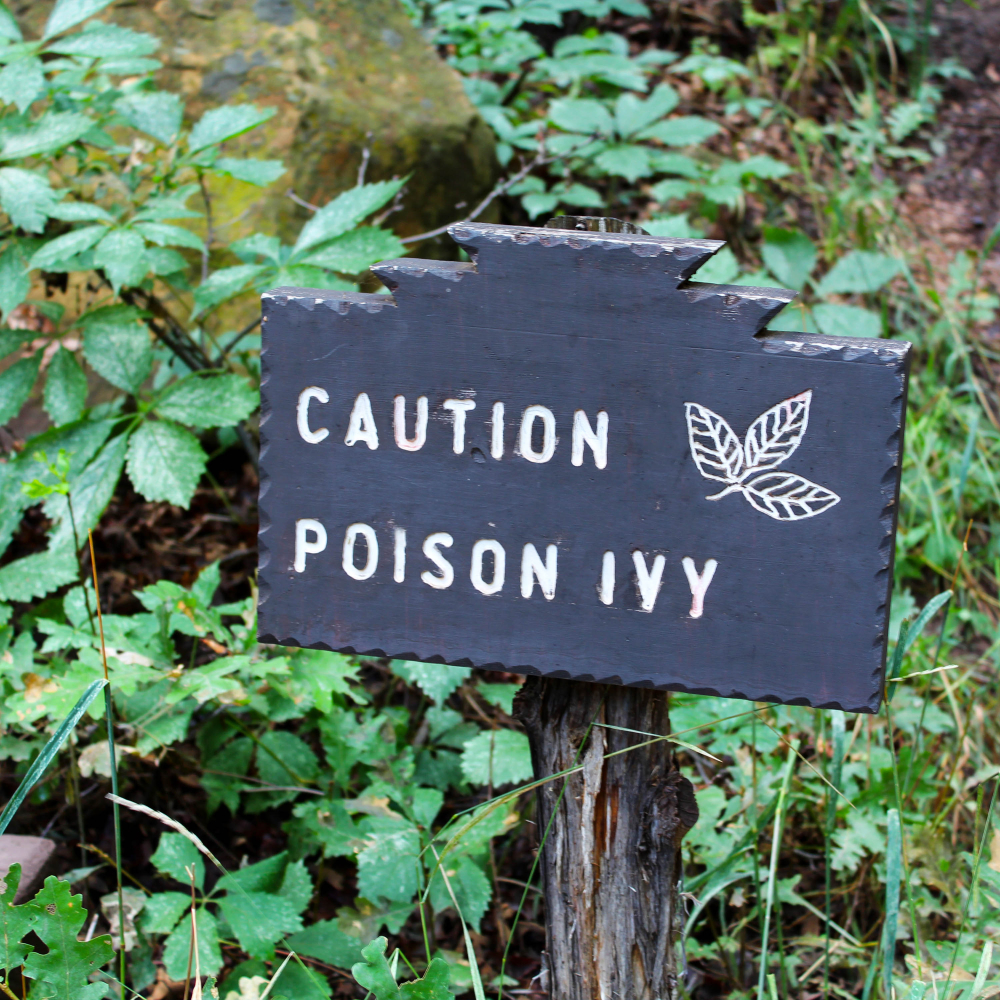

We may earn revenue from the products available on this page and participate in affiliate programs. Learn More ›
There’s nothing quite like getting outside for some fresh air to work in your garden, but it comes at a risk. If you happen to encounter poisonous plants like poison ivy, poison oak, or poison sumac, that perfect day can turn into weeks of misery. These common plants contain an oily substance called urushiol. Once this oil touches your skin, you can experience red, swollen, itchy skin that can blister and leave you scratching and uncomfortable for up to 2 weeks.
“You can’t see it or smell it, but it’s still active long after the plant is gone,”
Tony Hoang, H&J Landscaping Services
You don’t even have to touch the plants directly to get a reaction; the oil can end up on your clothes, shoes, gloves, and gardening tools and then spread to your skin. Unfortunately, urushiol sticks to everything and can hang around on surfaces for quite a while if you don’t wash it off properly. To prevent this from happening, it’s important to know how to clean poison ivy from your skin and from materials like clothing and garden tools after potential exposure to prevent or minimize that dreaded rash from ever showing up.
1. Skin
If you think you have come into contact with one of these poisonous plants, it’s critical that you take action right away—within 20 minutes of touching the plant or its oil. However, if an hour or so has passed and you don’t feel itchy yet, it can still be helpful to follow these steps to minimize the rash, according to the American Academy of Dermatology Association:
- Immediately wash exposed skin with rubbing alcohol; dishwashing soap; laundry detergent; or a cleanser, soap, or towelette designed with special poison ivy, poison oak, and sumac wash. Kaiser Permanente recommends products like Tecnu, Zanfel, and Goop to help remove the plant’s oil from your skin.
- Wash your skin gently; avoid scrubbing too hard because that can irritate your skin and cause a rash as the plant’s oils spread around.
- Rinse off the cleanser with lots of cool water.
- Don’t forget to wash under your nails as well by scrubbing with a brush since the oil easily can get trapped there.

2. Wearables
Clothing, shoes, gloves, and masks can also easily be exposed to the plants’ rash-producing oil, potentially remaining active for months, especially in dry climates. If you don’t clean these items properly, then handling them can lead to the development of an irritating rash.
The American Cleaning Institute recommends following these steps to keep your wearables free from poisonous plant oils:
- Remove garden gloves using a clean cloth.
- Put on a pair of disposable rubber gloves to remove your clothing.
- Place all clothing items in a plastic bag, along with the cloth you used to remove your garden gloves. Then, throw away the disposable gloves.
- Carefully dump the clothes from the bag into your washing machine. Throw away the contaminated plastic bag.
- Wash the clothes, gloves, etc., using a deep-cleaning laundry detergent on the hottest water temperature setting possible that is safe for the fabric (check clothing tags for instructions). Keep this load separate from any other items to prevent cross-contamination.
- Consider washing the exposed wearable twice to make sure you remove all the plant oil.
- Clean the washing machine by running an empty cycle with hot water and detergent to ensure all urushiol is gone.
- Dry the clothes according to their care labels.

3. Tools
Urushiol from poison ivy, poison oak, and poison sumac also sticks to tools, so it’s important to understand how to tackle exposed lawn and garden items. “You can’t see it or smell it, but it’s still active long after the plant is gone,” warns Tony Hoang, landscaping and home improvement expert and owner of H&J Landscaping Services in Fremont, California. He’s worked on properties where tools passed between crews, and multiple people ended up with rashes because no one cleaned the gear. “It doesn’t just stay on metal; it bonds to plastics, rubbers, and even ropes.”
Hoang recommends using a bucket of hot water mixed with grease-cutting detergent. “Avoid using high-pressure water alone since that just moves the oil around,” he says. “Wear nitrile gloves, scrub with a stiff brush, and rinse thoroughly. Then, a final wipe with rubbing alcohol or white vinegar will ensure the oil is broken down.” Throw away any cloth or sponge used during this cleaning process. It’s common to forget about tool bags, tool belts, and straps, so be sure to wipe down these surfaces as well.
